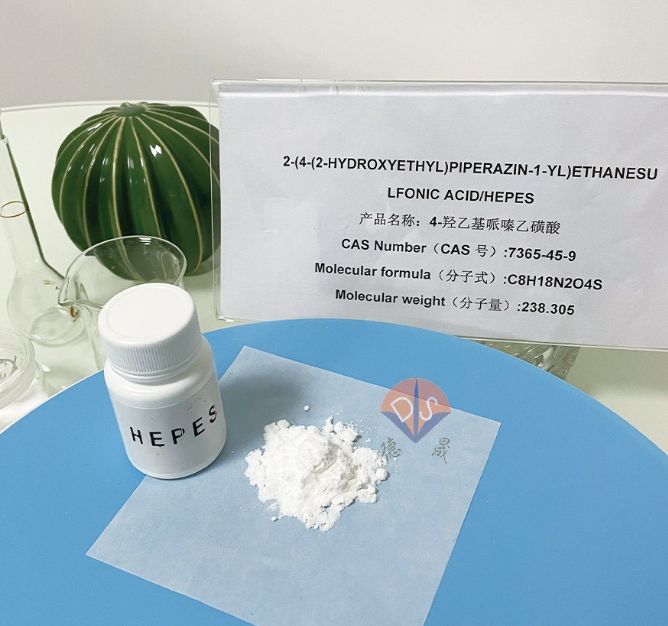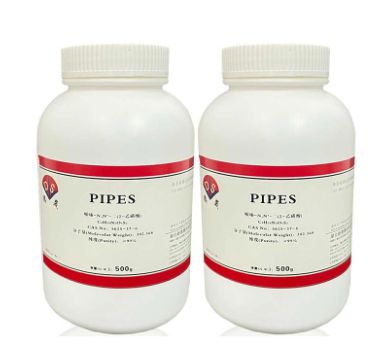Choose the appropriate buffer system, starting with understanding piperazine buffer agents
Release time:
2025-07-01
In the research of life sciences and analytical chemistry, maintaining the pH stability of the reaction system is one of the key factors to ensure the accuracy and reproducibility of experimental results. For this reason, scientists often rely on buffering agents with specific functions. Among them, piperazine buffer solutions have become powerful assistants in many scientific research scenarios due to their stable structure, good water solubility, and low chelating ability towards metal ions.

Piperazine buffer HEPES
Structure and Characteristics: Building a Stable Foundation with Piperazine Ring as the Core
The core structure of piperazine buffer solutions is a hexagonal piperazine ring, which endows them with excellent thermal stability and chemical inertness. Common piperazine buffers include HEPES, PIPES, POPSO, EPPS (also known as HEPPS), HEPPSO, HEPBS, etc. They have slight differences in molecular structure, but their common characteristics are:
1. Wide pH range: Most of them are suitable for physiological pH range (about 7-8.5), which is very suitable for simulating the human body or intracellular environment;
2. It does not form complexes with most common metal ions, making it particularly suitable for experiments involving metal ions, such as enzyme activity research, cell signaling, etc.
3. Good water solubility, easy to prepare and use;
4. Low cytotoxicity makes it widely used in cell culture and in vivo experiments.
5. Piperazine buffer covers multiple pH ranges from weak acids to weak bases, making it particularly suitable for simulating physiological environments and an ideal choice in fields such as cell biology, protein engineering, and molecular diagnostics.
Usage suggestion: Choose the right buffer to improve experimental efficiency
In practical operation, selecting the appropriate buffer should not only consider its pH range, but also make a comprehensive judgment based on the experimental purpose:
If the experiment involves metal ions (such as Ca ² ⁺, Mg ² ⁺, etc.), priority should be given to selecting piperazine buffer agents that do not complex with metals;
When conducting research on redox reactions, it is necessary to avoid using piperazine buffer solutions as they may affect the reaction equilibrium;
4. For cell experiments, it is recommended to use HEPES because it not only has good buffering capacity, but also has no significant toxicity to cells;
If high-temperature sterilization is required, most piperazine buffer powders are resistant to high temperatures and can be sterilized using high-pressure sterilization; If it is in a solution state, it is recommended to use filtration sterilization method.

Piperazine buffer PIPES
Desheng New Materials: Professional provision of buffering agent raw materials
As a domestic supplier of diagnostic reagent raw materials, Desheng New Materials has been deeply involved in the field of biological buffering agents for many years, focusing on the research and development and production of high-quality piperazine buffer products, including HEPES, PIPES, EPPS, HEPPSO, etc. The company strictly controls every production process to ensure high purity, batch consistency, and long-term stability of the products, and is committed to providing more professional products and services for enterprises.
Contact details
Contact number
Address: C8, Guanggu United Science and Technology City, Ezhou City, Hubei Province
Fax:0711-3704 589
Follow us



